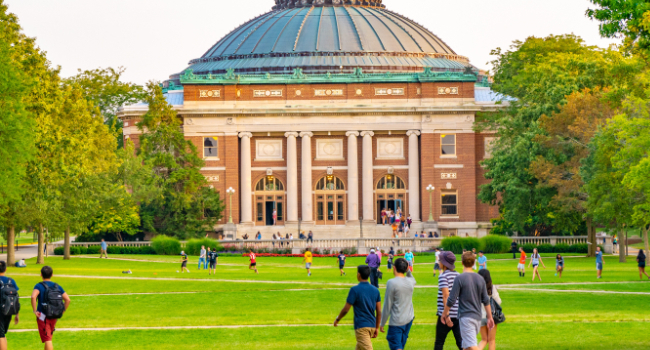
Why Performing a Back-to-School Campus Security Audit is Vital
- By Dave Baker
- September 03, 2025
The ‘25-’26 academic year will challenge campus security teams as they grapple with a range of heightened risks, potentially with fewer resources than before. Three realities in particular will make this academic year uniquely complicated:
- Political demonstrations and campus activism are likely to occur given the current political climate. Heated debates may spiral into altercations or widespread violence, and campuses can face backlash if personnel appear to infringe on students’ right to free speech. Safe areas for protestors and students will have to be established to allow students to continue attending classes safely.
- Severe weather events are expected, as we have already seen with devastating hurricanes, fires, and flash flooding. Students and faculty could be quickly put in harm’s way without proper notification systems and emergency protocols.
- International student policies and visa concerns mean many students are staying on campus during breaks out of fear they will be unable to return if they leave the country. Some campuses will stay operational longer to accommodate, despite potentially limited staffing and resources.
Each of these issues adds to existing concerns, including vandalism, assaults, and unwanted behaviors during campus events and gatherings. These circumstances call for a thorough security check-in to ensure teams best protect their students and faculty and stay ahead of the many possible situations that may develop.
How to Conduct a Campus Safety Audit
Most campuses have a time-tested security playbook and protocols to address their most common threats and recurring incidents. These practices may need simple adjustments to reflect the evolving risks of the new academic year.
Teams should conduct a security audit before students arrive or during the early weeks of the semester or trimester to ensure new risks are appropriately accounted for.
Consider taking the following steps to conduct your security audit:
- Compare current-year and prior-year resources. Establish a benchmark for your security resources last year compared to this year. If you have fewer personnel, how can composable technologies augment human resources? If you have more personnel, how can they help address your previous coverage gaps?
- Review last year’s security incidents. Assess what threats were most prevalent last year and whether those could have been deterred or more efficiently addressed. Pay attention to crime hotspots, which could include areas around dorms, parking lots, or in poorly lit, peripheral spaces. These hotspots merit increased attention.
- Conduct a faculty survey. Partner with campus administration to conduct a brief security survey inquiring about faculty members' perceptions of campus safety and their desired resources. Include a section for them to share open thoughts or general comments. Their input may reveal widespread concerns or areas of priority, and identify resources you can develop so everyone can support your security mission.
- Host a campus walk-through in the morning and at night. Walk around campus at both morning and night to understand the differences between those hours and the possible ways a bad actor could exploit these conditions. For example, identify where lighting is low at night and which areas seem most secluded during the daytime.
- Document scenario planning for distinct environments. Write down the distinct environments across your campus, including buildings, outdoor spaces, and large gathering areas. Brainstorm all potential threats that could arise in these environments and the existing safeguards to facilitate a response. Host a brainstorm with your security team to invite diverse perspectives and consider all situations, no matter how unlikely they are.
- Test all safety technologies. Revisit every security technology investment to ensure they still function as intended and connect to your larger tech ecosystem. This includes communication systems, video surveillance solutions, and access control platforms.
- Find coverage gaps. Identify where your security personnel and technologies lack complete coverage, such as areas not covered by video intelligence systems or areas of campus that are less frequently monitored by human guards. Consider ways to cover these gaps, which could be as simple as adjusting landscaping to remove blind spots or investing in e-bikes for guards to more quickly survey the entire campus. Identify how new construction projects could impact sight lines and whether or not you’ll need additional coverage.
- Run security response drills. Host security simulations where your team runs through possible situations and employs the appropriate technology or human response to quickly resolve the situation. This gives team members hands-on experience and further tests your technology and coverage strengths and weaknesses. Invite technology partners in to give training to security personnel on different technical platforms being used on campus.
Invite open dialogue with your security personnel to understand what they see as the team’s greatest weaknesses and strengths as you consider ways to bolster your defenses. Whenever possible, foster collaboration with community leaders and law enforcement to identify new solutions and preserve community-wide safety.
Campus Safety Audit Checklist
The following checklist can guide your team through validating your security posture:
- Test all manual and electronic locks
- Test all emergency comms systems
- Test all intrusion detection systems
- Clean and test all surveillance cameras and sensors
- Confirm all lighting around campus is operational
- Document anticipated scenarios and response plans
- Revisit student demonstration response plans
- Revisit natural disaster response plans
- Send staff and faculty resources for navigating emergency situations
- Verify all security technologies perform as intended
- Coordinate with campus leaders to facilitate student communication strategies
Creating Safer Campuses
Although it is impossible to prevent every security incident, teams can orchestrate highly effective response plans to quickly address any situation — and this starts with performing an audit.
The year may present new challenges for teams; however, a collaborative approach that blends campus and community resources with human and technology solutions is most effective for preserving safety.
About the Author
Dave Baker is Senior Solutions Architect at LiveView Technologies (LVT)